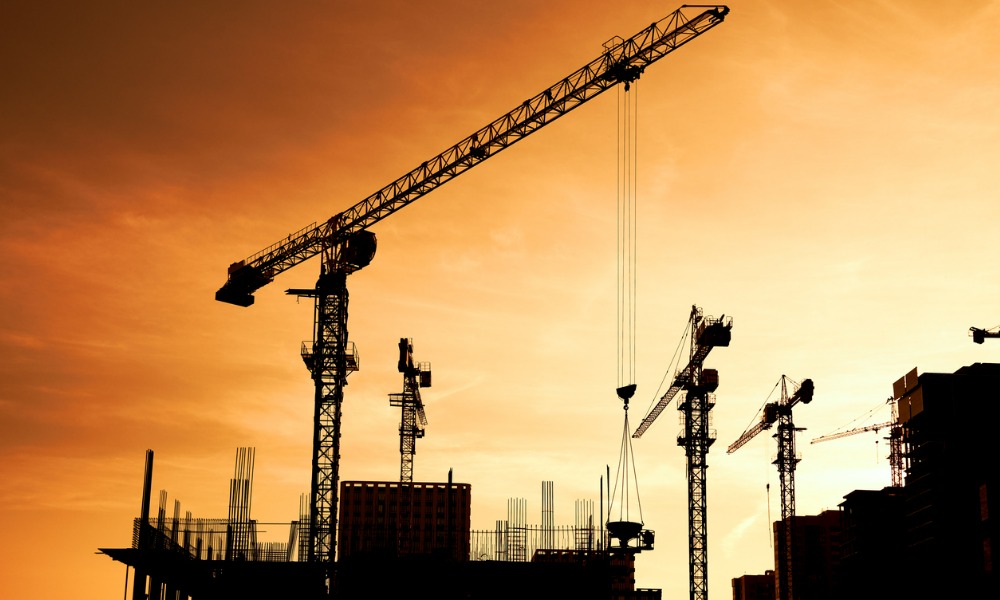Four crane incidents so far this year a 'huge concern' for WorkSafeBC

The state of tower crane safety in British Columbia is a “huge concern” for WorkSafeBC, and if the multiple recent incidents (one fatal) aren’t enough to understand why, the volume of infractions in 2023 underscores the urgency of the issue.
WorkSafeBC’s Crane Inspection Team conducted 968 unannounced inspections last year and issued more than 500 non-compliance orders.
“The main areas of non-compliance related to equipment assembly, equipment inspection, confirming operator qualifications, and safe-lift planning,” reads an email to Canadian Occupational Safety.
“There is a significant amount of activity happening across the province,” explains Suzana Prpic, senior manager of prevention field services at WorkSafeBC. “This is a collective effort in terms of employers, prime contractors, we as regulators, and industry, working together to ensure that all requirements are adhered to.”
Upon learning how many times employers and contractors failed to adhere to those requirements, perhaps it’s not surprising tower crane accidents are happening with such frequency.
Slew of recent crane incidents
On January 26 a crane collapsed and dangled from a high-rise tower under construction in Burnaby. Four days late, a crane partially collapsed in Surrey.
Nobody was hurt, but those two incidents prompted a message from the International Union of Operating Engineers (IUOE) Local 115, which issued a press release demanding enhanced training and more robust regulations surrounding tower cranes. At the time, Josh Towsley, assistant business manager with IUOE Local 115 said those two incidents “should serve as a wake-up call.”
On February 21, at a construction site in Vancouver, a crane dropped its load on Yuridia Flores, killing the mother of two from Mexico, who had just recently become a permanent resident of Canada. Flores was working as a labourer on the project. It was her first job in Canada.
A couple weeks later, another incident, on March 4 in Vancouver. Towsley visited the work site and found the boom of the crane lying flat against a tower.
All four of those incidents are under investigation, and Prpic says its difficult to know what actions to take until the investigations are completed. “Is it operating qualification? Is the issue around equipment maintenance? Are safe work procedures lacking?” she questions.
Union demands changes
The IUOE says the industry lacks sufficient regulation and has issued these requests to the province, WorkSafeBC, and industry.
- Recognize tower crane operation and rigging as a compulsory trade and require training and certification for all crane workers.
- Ensure provincial training and certification of crane operation and rigging personnel meets the recognized highest standards in Canada.
- Mandatory licensing of contractors who work in the assembly, climbing, reposition or disassembly of tower cranes.
- Develop minimum levels of training for workers who work in the assembly, climbing, repositioning or disassembly of tower cranes.
- WorkSafeBC immediately release the results of its investigation into the July 12, 2021, Kelowna tower crane collapse.
- Upon release of the investigation reports, the Provincial Government and WorkSafeBC consider additional legislative and/or regulatory changes to improve tower crane safety.
What WorkSafeBC is doing
Prpic says conversations between WorkSafeBC and all industry stakeholders surrounding tower crane safety are ongoing. She says the idea of tower crane operation and rigging as a trade is being reviewed by Skilled Trades BC.
She points out two new regulations took effect last year. One requiring zone limiting devices for tower crane use to prevent collisions, and the other requiring professional engineering supervision of the inspection of equipment to make sure it is safe structurally and mechanically after a misadventure or any kind unintended contact.
There are also two changes expected to take effect later this year. One is called a notice of project, which requires anyone doing anything with a tower crane to notify WorkSafeBC of its plans two weeks in advance. The other surrounds the term ‘safe for use’, which will be clearly defined, “and this involves a professional engineer certifying the crane as safe after an annual inspection,” says Prpic.
Unanswered questions from Kelowna
When it comes to results of the Kelowna crane collapse investigation report, Prpic says that while the report hasn’t been made public, “any of the learnings that we have gleaned have been woven into our ongoing crane safety initiatives.” One concern that has come to light, is the revelation that Cailen Vilness, tasked with dismantling that crane, only received one hour of training, according to his father.
The RCMP have recommended criminal charges in that incident, which killed five people, including Vilness. A decision on that recommendation is pending from the B.C. Prosecution Service.
“We will release the results as soon as we possibly can,” says Prpic, regarding the WorkSafeBC investigation report.
The results of Kelowna investigation, along with the findings from the investigations into the four incidents that have happened this year, will certainly be welcomed by an industry clearly in need of improvement.





